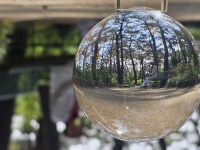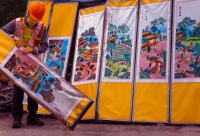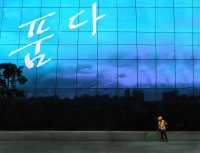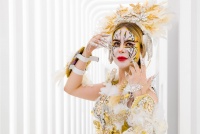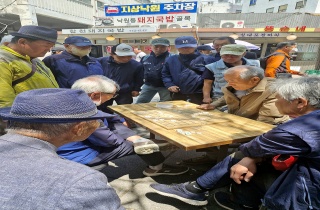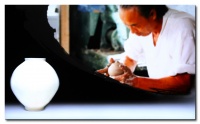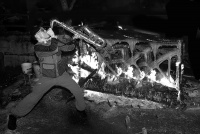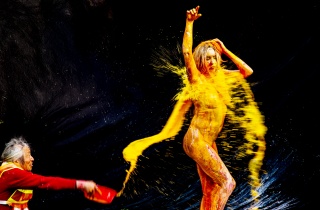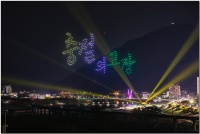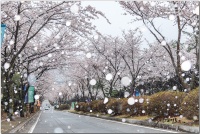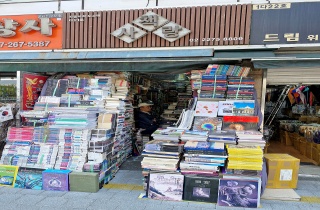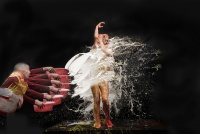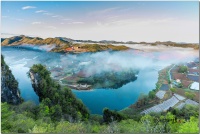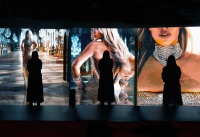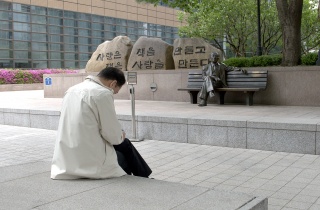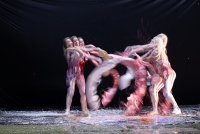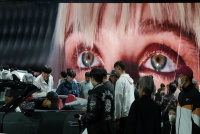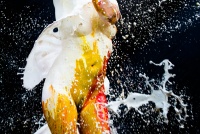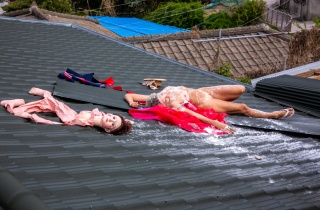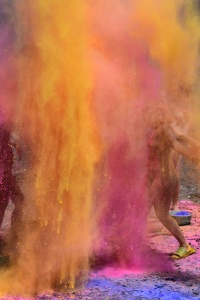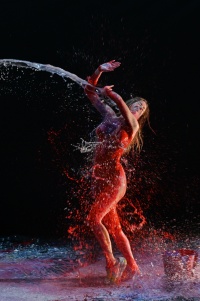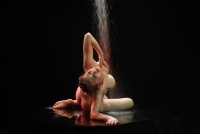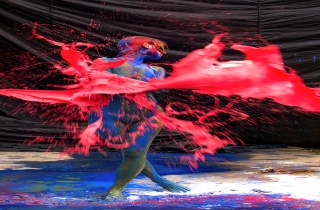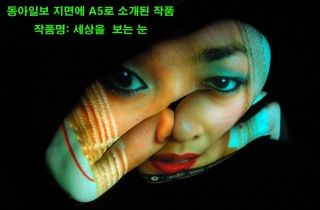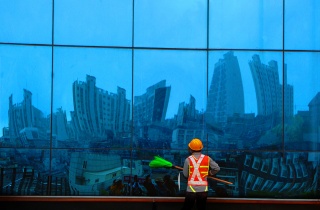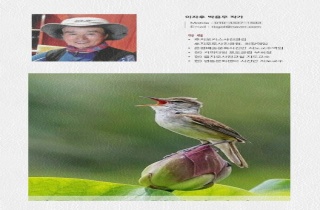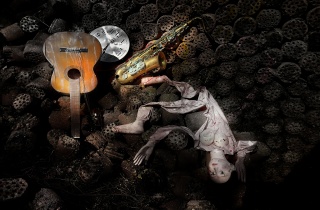사진가 채희술 님의 개인전 시선의 공존Coexistence of Gaze이 오는 11월15일(화)까지 인사아트센터 3층에서 열리고 있다. 작가께서 보내오신 작가노트와 작품에 대한 서평 그리고 작품들의 양이 많아 두 번에 걸쳐 연재한다.
채 희술 개인전 전시정보
1. 전시 제목 : 시선의 공존 (coexistence of gaze)
2. 전시 장소 : 인사아트센터 (Insa Art Center) 3층, 서울시 종로구 관훈동 188
3. 전시 일정 : 2011. 11. 2(수) – 11. 15(화)
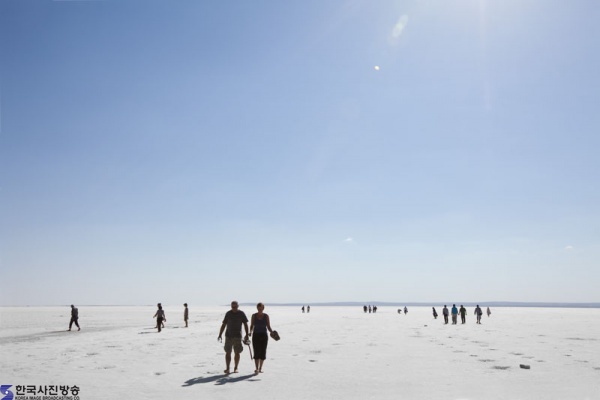
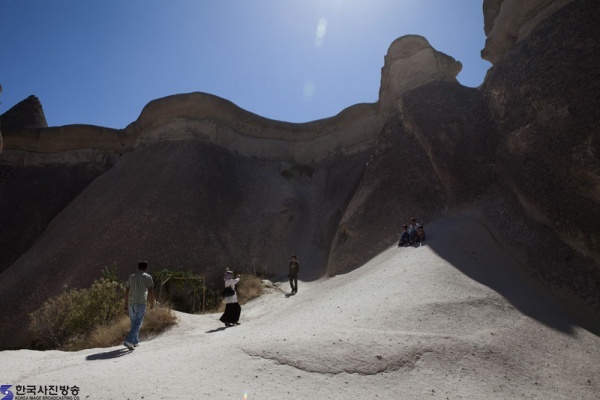
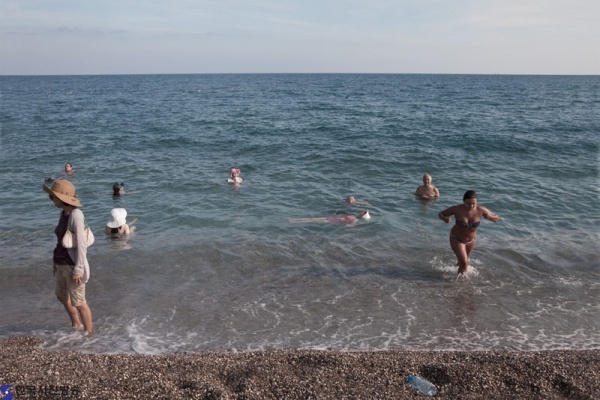

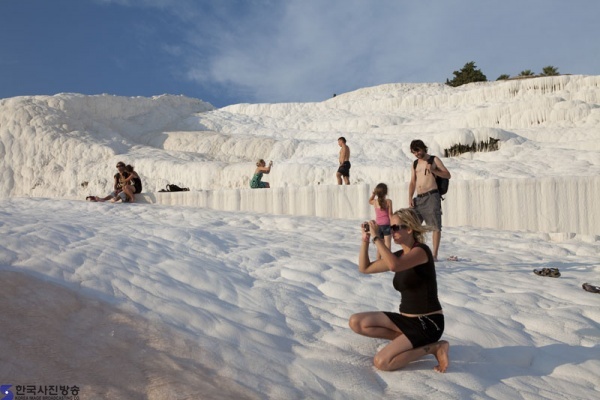
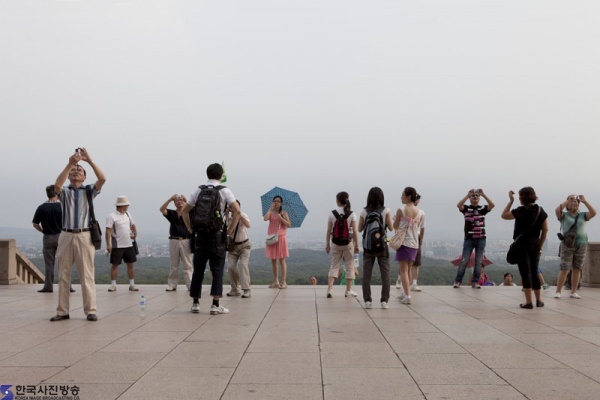
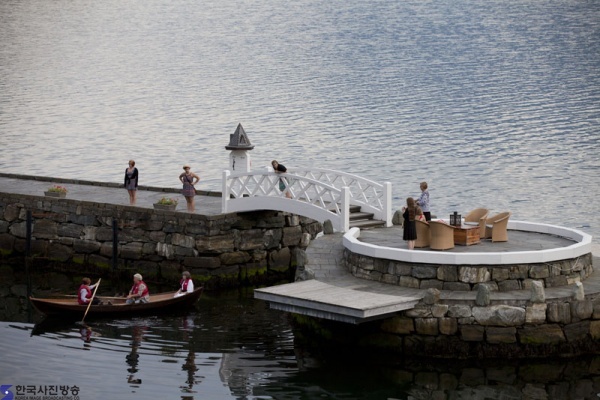
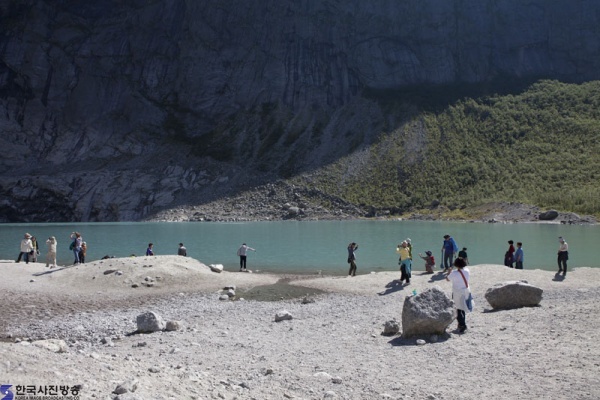
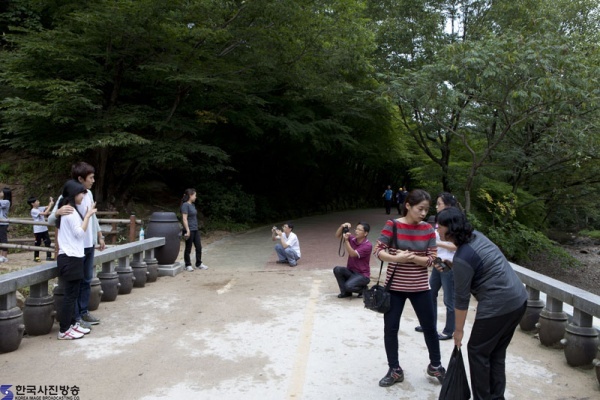
시선의 공존(고립과 대결하는 무언의 소통)
생존의 사전적인 의미를 살펴보면 살아 있거나, 살아남아 있는 상태를 말한다. 도시에서 생존을 사전적인 의미의‘살아있음’과‘살아남음’에서 볼 때‘살아남음’에 가까워 보인다. 프랑스의 정치 이론가 폴 비릴리오(Paul Virilio)의‘속도와 정치’에서는 드로몰로지(dromologie)의 접두어인 그리스어‘드로모스(dromos)'는 경주(장), 달리는 행위, 민첩한 움직임’이라는 뜻으로‘경주의 논리’를 의미한다. 이것은 도시 속의 삶이‘경쟁’이라는 단어로 함축적으로 표현할 수 있으며 도시 속의 생존에서 그 의미가 통한다. 도시는 인간에게 있어서 거대한 인공적 자연이며 인간은 도시와 역동적으로 진화했다.
도시에서 사람들과 어울려서 생존하려면 타자와의 관계성이 중요한 문제로 인식되는데, 현대사회에서 생존에 필요한 조건을 나열하는 것은 어떤 의미가 있으며, 생존한다는 것은 근본적으로 무엇인가. 이것은 다른 의미에서 태어났기 때문에 살아간다는 소극적인 태도보다는 생존한다는 것은 살 가치가 있기 때문에 소중하다고 생각하는 것이다. 도시에서 사람들은 자신의 생존을 위해서‘방어기제(Defense Mechanism)’가 작동한다. 이러한 태도는 본능적으로 자신을 지키기 위한 생존본능에 다름 아니다.
채희술의 사진은 거대한 현대사회의 구조에서 자신을 방어하고 개인의 소속을 유지하며 살아가는 불특정 다수를 기록한다. 그들은 사회에서 자신을 방어하는 본능 때문에 표면적으로는 고립되어 보이는 사람들이다. 미국의 정신분석학자 베락은 타자와의 관계에서 일정한 거리를 유지하고 자기를 방어하려는 심리를 ‘고슴도치 딜레마'라고 정의한다. 프로이트(Sigmund Freud)는 이러한 인간관계를 이율배반(Ambivalent)이라고 했다.
작가의 카메라는 수많은 군중 틈에서 자아의 고립된 세계를 드러낸다. 그들은 외형적으로 타지의 땅에 몰려든 외국인들이다. 관광객은 관광지와 도시에서 몸에 배어 있는‘초자아(superego)’의 구속 아래 억제되었던 자신의 본성을 드러내기도 한다. 그들은 자신만의 독립적, 고립적인 세계를 드러내는 역할은 들고 있는 카메라가 적극적으로 수행한다.
관광객의 카메라는 외부의 풍경을 기록하고, 자신의 가족과 기념사진을 찍거나, 자율적으로 타자를 찍어주는 역할을 하며, 관광객들은 자신의 카메라를 통해서 의사표현을 자유롭게 수행한다. 채희술의 카메라는 이러한 그들의 모습을 관찰자의 입장에서 조용히 기록한다. 그런 의미에서 사진의 프레임 안과 밖에서‘카메라의 시선은 유기적으로 공존’하는 것이다. 채희술의 사진에서 소통을 꾀하는 것은 자아와 타자에서 작동하는 시선의 작용이다. 이를테면 작가를 바라보는 시선은 사진을 찍는 과정에서 발생하는 자아와 타자와 시선이 교류하는 도중에 생기는 우연성에 기인한다. 채희술의 카메라를 향해 적극적으로 소통하는 행위가 그러한데, 그 행위는 카메라를 향해서 자신의 존재를 증명하려는 일종의 몸짓을 드러낼 때 타자와의 정신적인 교감이 발생하게 된다.
자아와 타자와의 시선의 관계는 미국 다큐멘터리의 감독 로스 맥엘위(Ross Mcelwee)의 ‘<셔먼 장군의 행진,1989>’ 처럼 녹음 마이크가 쑥 내밀어 진 화면이 등장하거나, 혹은 등장인물이 카메라맨에게 불쑥 질문을 던지는 행위와 유사하다. 이런 장면은 다큐멘터리의 ‘투명성(Transparency)’을 깨뜨려 버린다. 즉 있는 그대로의 삶을 관찰하는 관객의 환상을 파괴해 버리며, 작품의 인위성을 제거하고 자연스럽게 꾸며서 현실을 반영한다고 믿게 하며, 관객이 현실을 보고 있다는 것을 믿게 하려는 노력이다. 이러한 시도는 연극, 영화, 미디어아트, 사진에서 유사하게 관객이 지금 바라보는 보는 상황이 허구가 아니라 현실이라고 믿게 한다.
테드 포스트(Ted post) 감독의 혹성탈출 2“지하도시의 음모”에서 주인공 브렌트는 방사능 오염으로 흉측한 모습으로 변한 지하세계에 숨어 있는 인간들과 대적하고 소통하는 과정에서 내면의 마음으로 소통하는 장면이 등장한다. 굳이 말을 하지 않고 상대방과 정신적으로 소통하는 것은 사진매체에서도 적용된다.
채희술의 사진에서 무언의 소통이 가능한 또 다른 이유는 사진 속의 단독적인 풍경이 다른 사진과 병렬로 연결해서 보면, 시, 공간적으로 다른 장소에 찍은 것인데도 불구하고 서로 조화로운 균형을 이루고 있기 때문이다. 사진에서 개별적인 사람으로 떠돌던 모습은 군집을 이루면서 배경과 타자의 관계성에서 전체적인 조화를 이루어낸다. 하지만 그의 사진에서 한 개인의 장단점 같은 개별적인 성격, 습성까지는 알기 어렵다. 그것은 ‘고슴도치 딜레마'에서 말하듯 상대방을 어렴풋하게 느끼는 정도의 심리적 거리를 유지하기에 그렇다. 사진 속에 찍혀진 사람들이 타자의 감정 상태를 정확히 모르는 것처럼, 채희술의 사진을 바라보는 관객의 심리상태도 마찬가지로 동일시된다.
채희술이 여행의 의미에 대해서“일상을 벗어난다는 것은 무거운 짐은 버리고, 용기나 희망, 그리고 안식을 얻어오는 행위라고 생각 한다”고 했지만, 사진 속의 관광객들이 여행을 통해서 마음을 비우려는 것인지, 혹은 자신의 삶을 재충전하기 위해 지식과 경험을 얻으려는 행위인지는 알 수 없다. 채희술의 사진에서 주목할 점은 타자의 모습을 사전에 아무런 전조 없이 관광지 혹은 광장의 현실 한복판에서 관찰하는 행위에 있다. 이후에도 타자를 놓치지 않고 관찰하는 카메라는 그들의 행동에 집중한다. 타자는 걷는다. 카메라도 함께 걷는다. 카메라의 풀 샷은 자아의 고립과 대결하는 무언의 소통을 이끌어 내며, 이를 바라보는 관객은 자신이 처한 복잡다단한 사회적 구조의 큰 틀을 조망해보는 데 의미가 있다.
김석원(시각예술평론, 미디어아트박사)

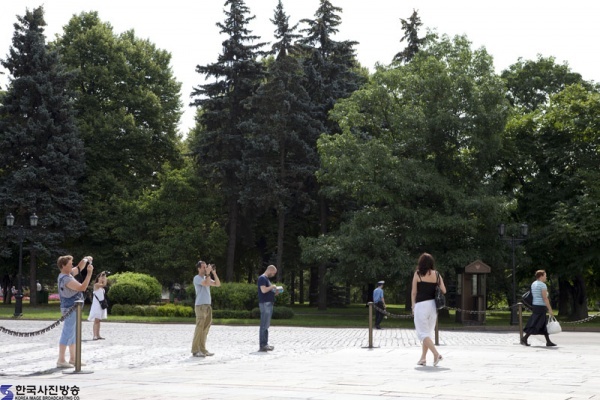
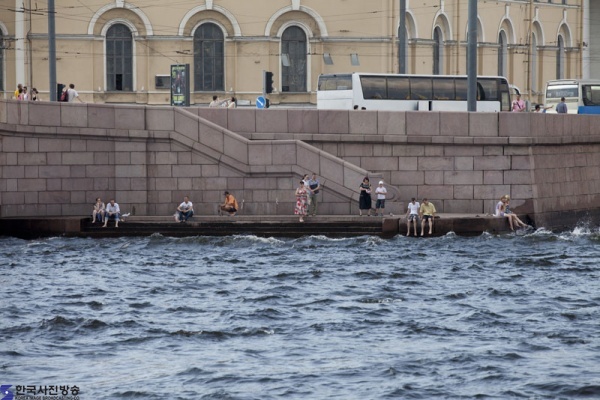

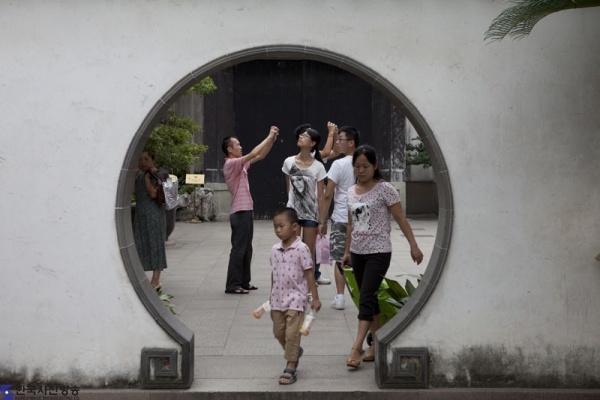

Coexistence of gaze (silent communication against isolation)
In the dictionary definition of survival is a status of living or remaining to live. If we compare live with survival in the urban life, it looks as if survival is more proper. Paul Virilio, a French political theorist, argues, in his 'Speed and Politics', that dromos a prefix of dromologie means a race course, racing activity and rapid movement that can be meant 'a logic of race'. 'Competitiveness' is an implicit expression of urban life in which people strive for survival. The city is a gigantic artificial nature and people evolved with the city dynamically.
The relation with others is important in the course of urban life. What is the point to enumerate conditions for survival in the contemporary society and what is it to survive? People live not for a simple survival but cherish life because life itself deserves. Defense mechanism operates in the city for self survival. Such an attitude is nothing but a survival instinct to protect self.
Photos of Chae Heesool record unanimous multitude who defense themselves against massive structure of the contemporary society and who maintain their affiliates. They are people who seem to be isolated at first glance for their defense instinct to protect. American psychologist Barack defines such attitude to keep distance from others and to defense self as hedgehog dilemma.' Sigmund Freud also called it as ambivalent.
The artist's camera exposes isolated world among the crowd. They are strangers in a strange world. Tourists used to expose their oppressed ego under 'superego' in the tourist spots and city. So, a camera plays an important role in revealing their independent and isolated world.
The tourist's camera record landscape, taking a self and family picture to perform free expression through the lens. Chae's camera silently records such features in a silent observer's perspective. In this sense, the eyes of camera organically coexist' in and out of frame. What he intends in his picture is an operation of perspective between ego and others. The eyes of an artist communicate with contingency in the course of exchange of eyes between ego and others when taking a picture. Chae's proactive communication toward a camera demonstrates it. Such activity can generate emotional communication with others.
The relation of eyes between ego and other is similar to an action to show up a microphone in the screen or staring in the films giving a question to a camera man as shown in the file "Sherman's March, 1989" by Ross Mcelwee, an American documentary film director. Such scene breaks up 'transparency' of documentary. It destroys the fantasy of audiences who observe life as it stands, removes artificiality of the work, get people to believe as if they reflect reality. Such an attempt makes also people to see reality in theatre, film, media art and photo.
In Beneath the Planet of the Apes by Ted Post, Brent emotionally communicates with hiding people underground who have ugly appearance by radioactive contamination. Unspoken communication applies to photographic media too.
Another reason of communication in Chae's photos is a kind of harmonious balance when you link them in a line despite the different time and space. Individual feature in the photo creates overall harmony in the relation with background and others. But, it is hardly understandable to catch individual character and habit from his photos. That is because he keeps psychological distance as in the 'hedgehog dilemma'. Just as one does not know what other think, so does the mental of audiences who watch his photos.
Chae Heesool once remarks that 'travel is an activity to remove routine and to catch courage, hope and relief', but it is not clear whether tourists in his works really intended to empty their mind or to obtain knowledge and experience to recharge their life. What we should focus on his works is his observation without any prejudice in watching others but simply in observing them in the midst of square. He keeps focusing on tourists' activity without losing sight on others. Others walk. So does the camera. Full shot of the camera exerts silent communication that conflicts with isolation of ego. People may experience a grand frame of social structure where people are involved.
Kim, Seokwon(Visual art critic, Ph. D in Media Art)
|

